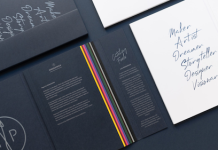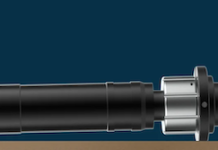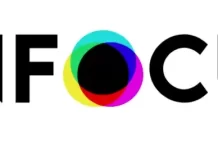Fabrice Peltier, designer and eco-design consultant, and writing for drupa, encourages fellow designers, manufacturers and businesses to embrace eco-inking and unlock the potential for positive change in their creative industries.
The common factor in many graphic creations, especially in packaging design, is that they are usually printed in large quantities to meet consumer demands. However, amid the focus on reducing packaging material consumption, one crucial aspect seems to have been overlooked: the environmental impact of printing inks. Often deemed insignificant, the inks used in graphic creations play a more substantial role than we might realise, both in terms of their ecological implications and economic considerations.
Understanding the composition of ink reveals its complex nature, which consists of several components. The pigments, or colourants, provide the vibrant hues that capture attention and differentiate brands. The vehicle, or binder, acts as the carrier, enabling the ink to adhere to various surfaces effectively. Additionally, adjuvants are used to enhance ink properties, ensuring quick drying times or improved resistance to wear and tear.
Each graphic element, typographic character, shape and colour thoughtfully chosen to convey the intended message represents a specific quantity of ink required for reproduction. By embracing an eco-friendly approach known as ‘eco-inking’ – an ink saving process – designers can craft top-quality graphic designs while concurrently managing ink consumption during the printing process.
The eco-inking approach is best incorporated during the initial stages of design development, providing an intermediary step based on a well-conceived graphic proposal. However, forward-thinking designers may also consider eco-inking as an integral part of the entire design process, even at the conception of a brand’s graphic identity and guidelines.
The core objective of eco-inking – Ink Saving Process – is to optimise ink consumption without compromising the quality and visual impact of the creations. It seeks to achieve a harmonious balance between resource efficiency and creativity. Although changes made to ink usage might not be immediately apparent to consumers or readers, successful eco-inking initiatives have demonstrated their potential to bolster a brand’s environmental credibility and resonate positively with the intended target audience.
Moreover, adopting an eco-design philosophy in graphics goes beyond reducing ink consumption; it encompasses a holistic approach to environmental stewardship. By implementing eco-friendly practices in material selection and production processes, designers can significantly reduce the environmental footprint of their work.
Notably, eco-inking also presents a compelling advantage when it comes to recycling. Graphic papers, extensively used for packaging and marketing materials, undergo a deinking process during recycling to ensure the purity of the resulting paper. By minimising the quantities of ink used in printing, eco-inked papers facilitate the deinking process, reducing the consumption of chemicals and energy required to remove inks from the recycled material. This, in turn, minimises waste production and contributes to a more sustainable circular economy.
For brand owners aiming to reduce costs, ‘eco inking’ offers a potential source of savings. Using fewer inks directly impacts expenses, and opting for CMYK, or even CMY, printing can deliver outstanding results at even lower costs and with a reduced environmental impact.
The efficiency of the eco-inking approach has been proven by its practical application. Developed over a decade ago, this innovative technique has been meticulously tested on over 250 consumer product packages in France. The results have been nothing short of remarkable, consistently achieving an average reduction of ink consumption by 20 to 25% while preserving the visual appeal and message impact of the original creations.
As a passionate advocate for sustainability and ecological responsibility in design, I firmly believe in sharing knowledge and expertise for the collective betterment of our environment.
Embracing eco-inking is not only a means to enhance the environmental sustainability of graphic creations but also an opportunity for designers to stand as pioneers of change in the ever-evolving landscape of design and consumer consciousness. Together, we can make a meaningful contribution to safeguarding our planet’s resources and ensuring a greener, more promising future for generations to come.
DRUPA
https://www.drupa.com





















